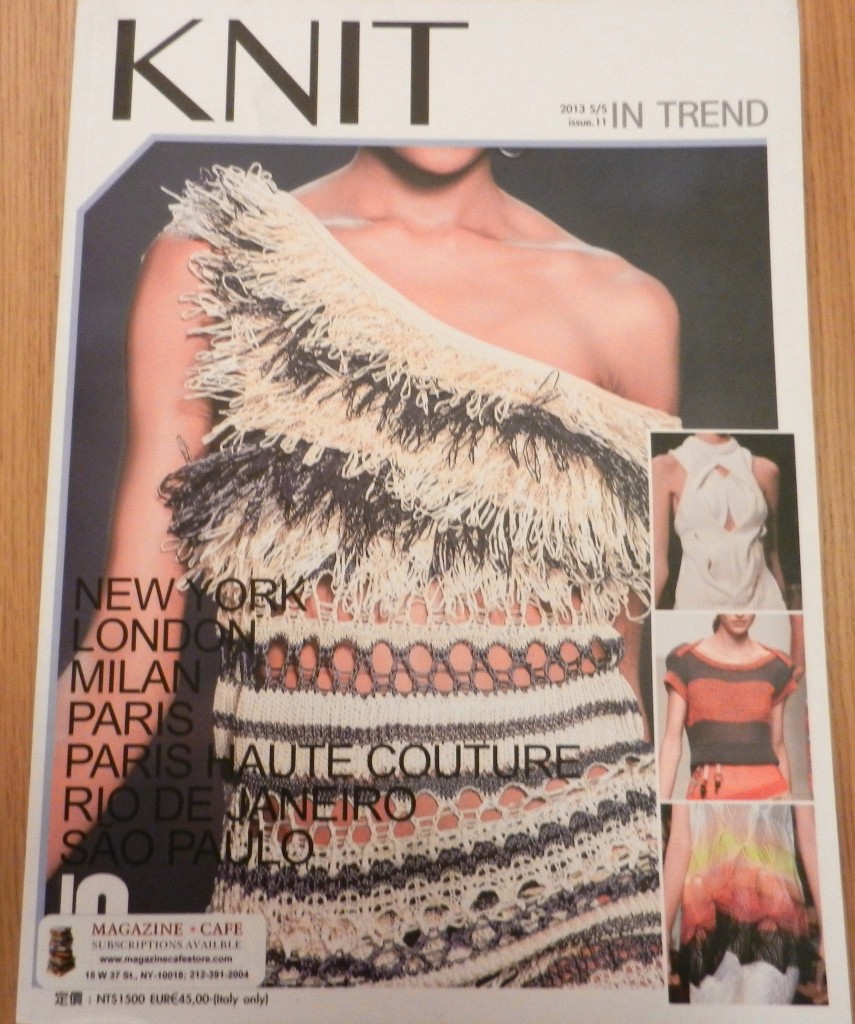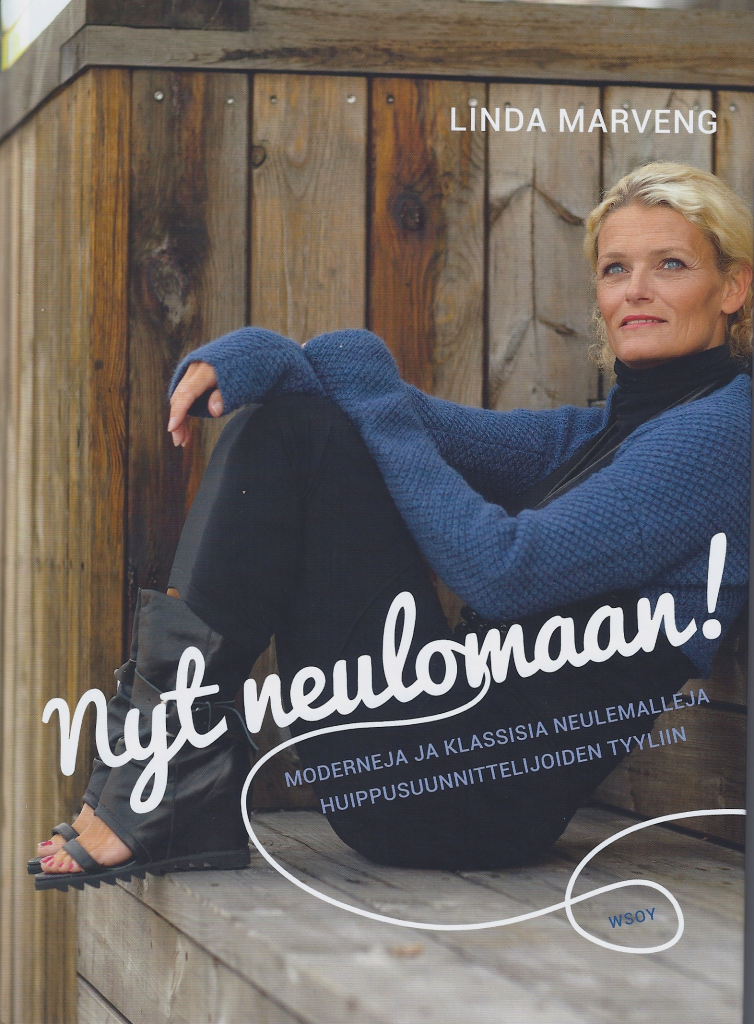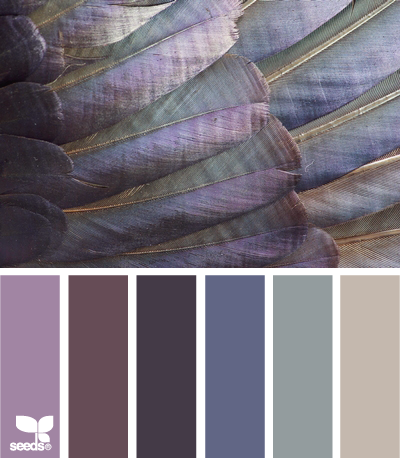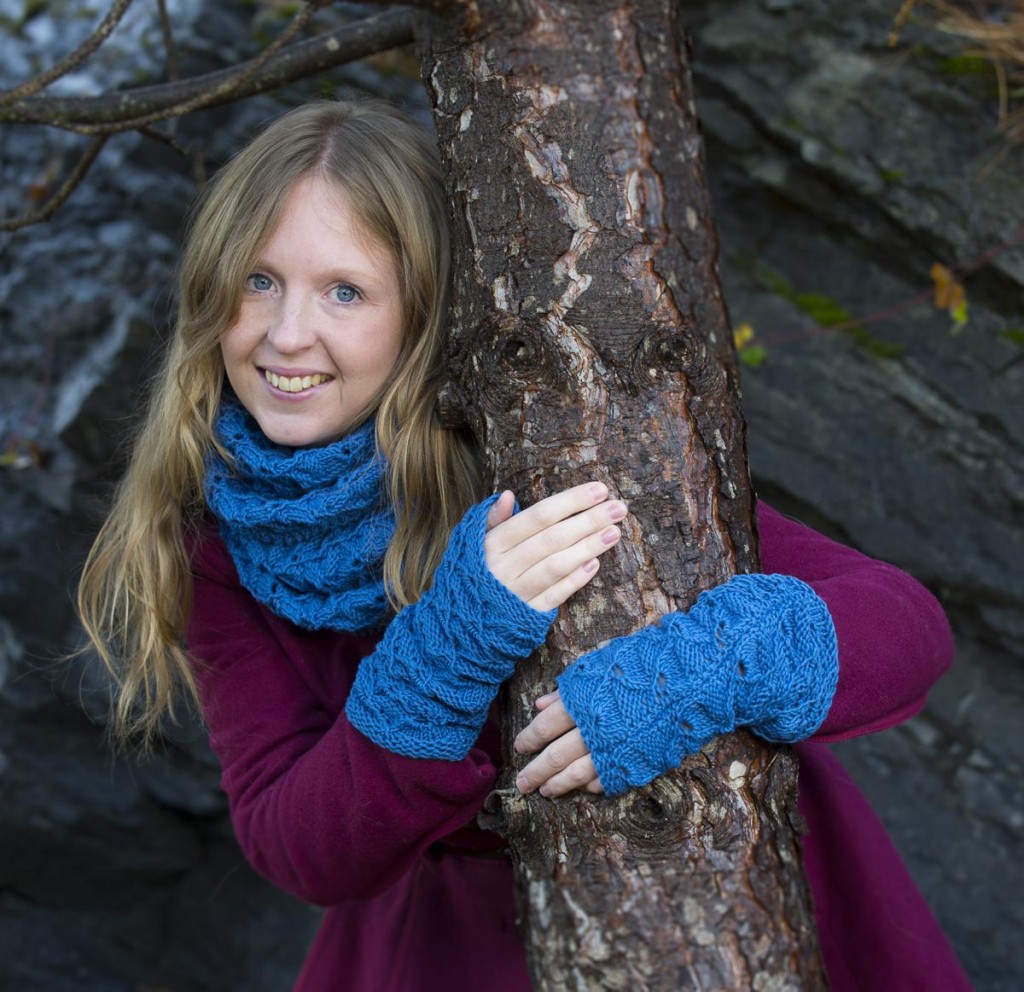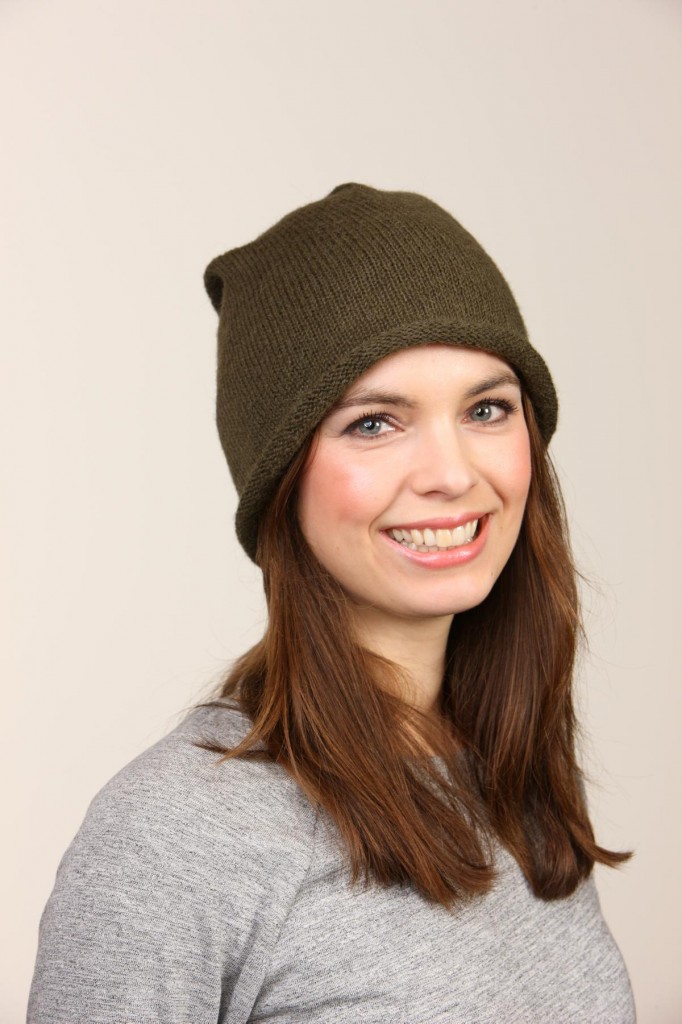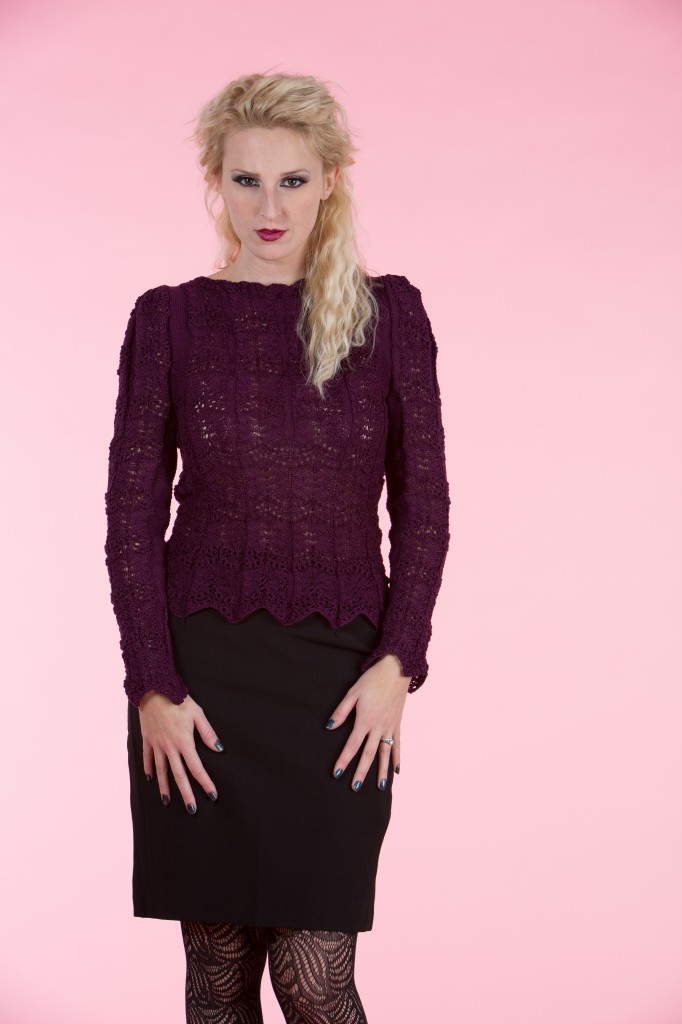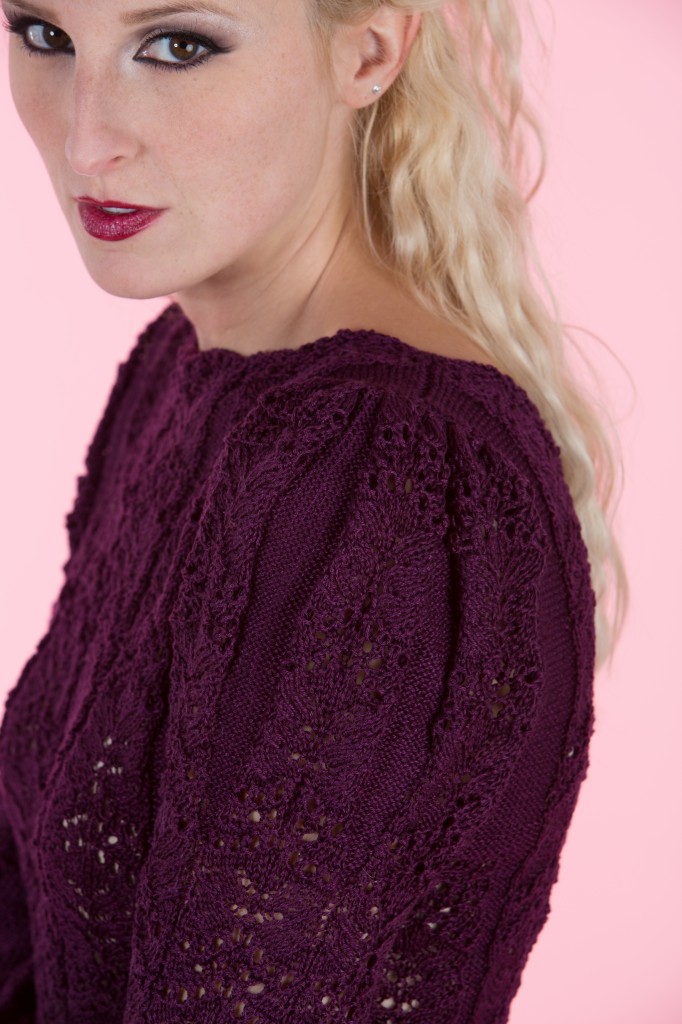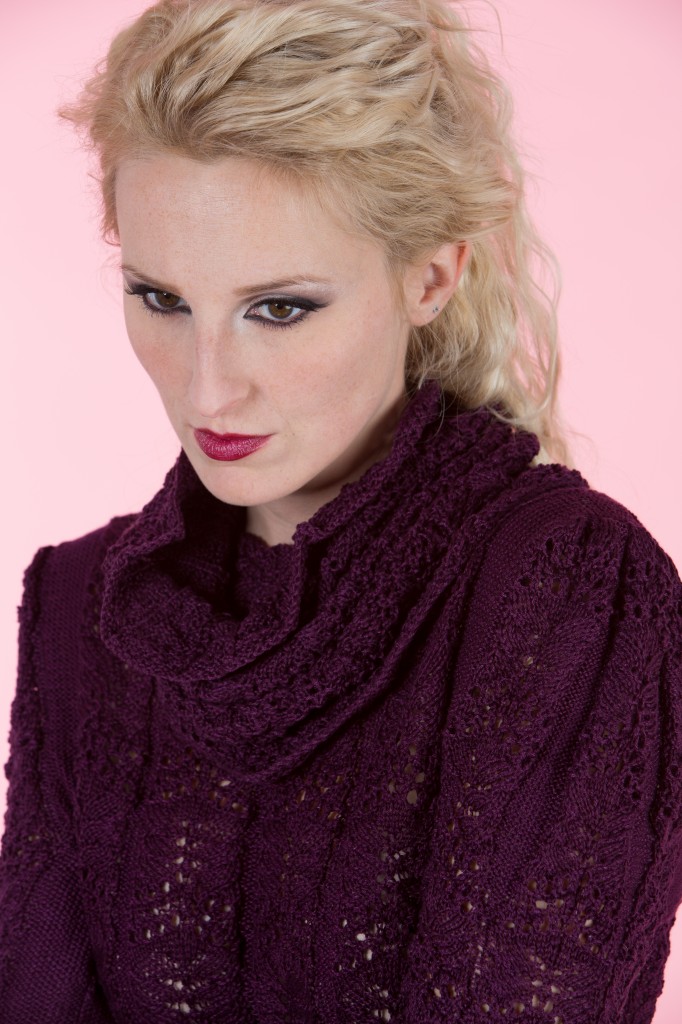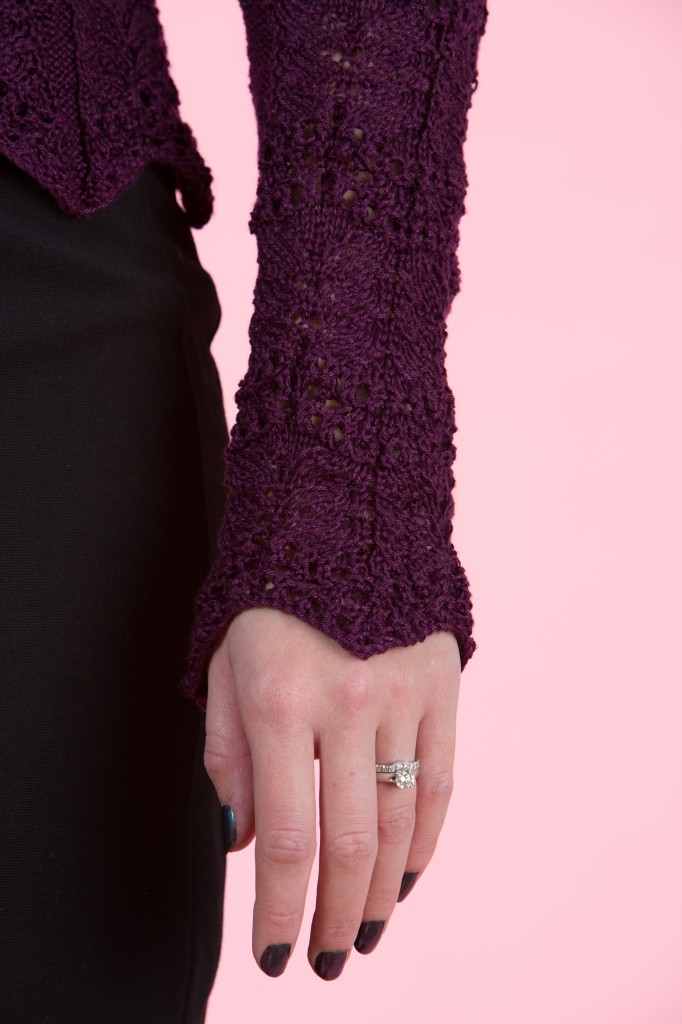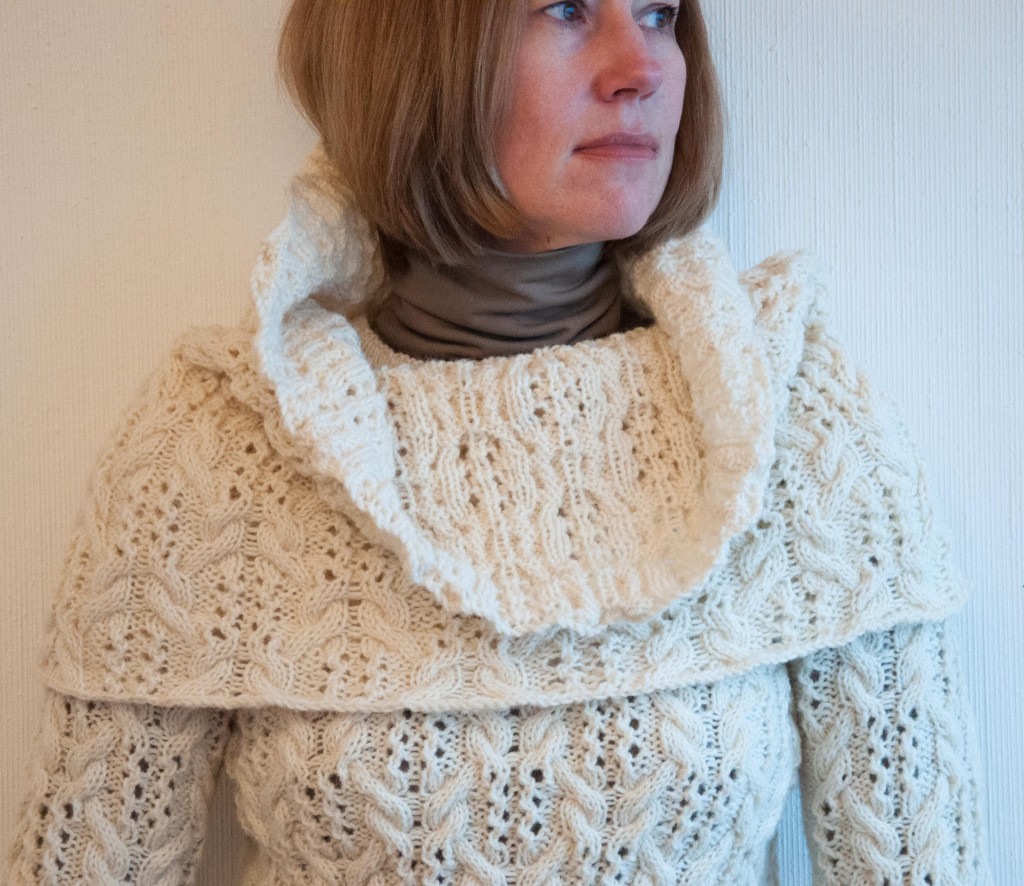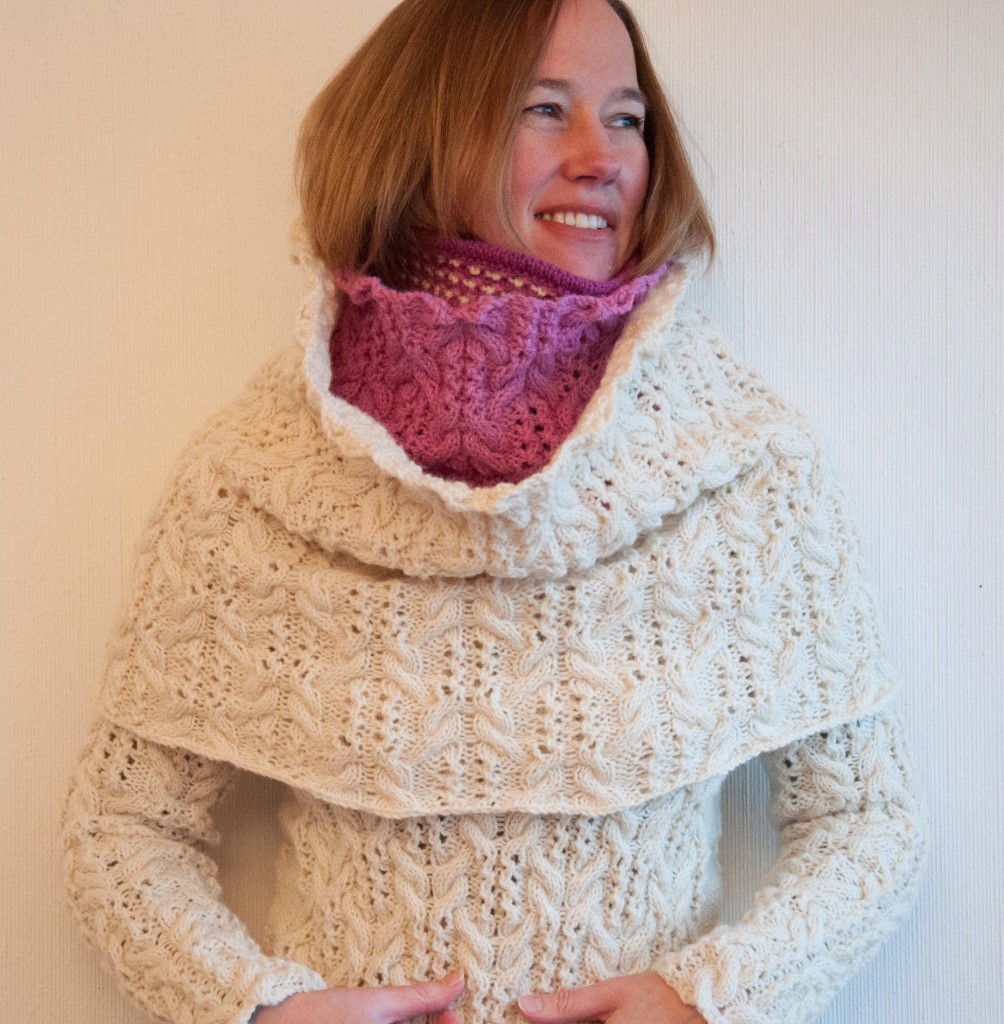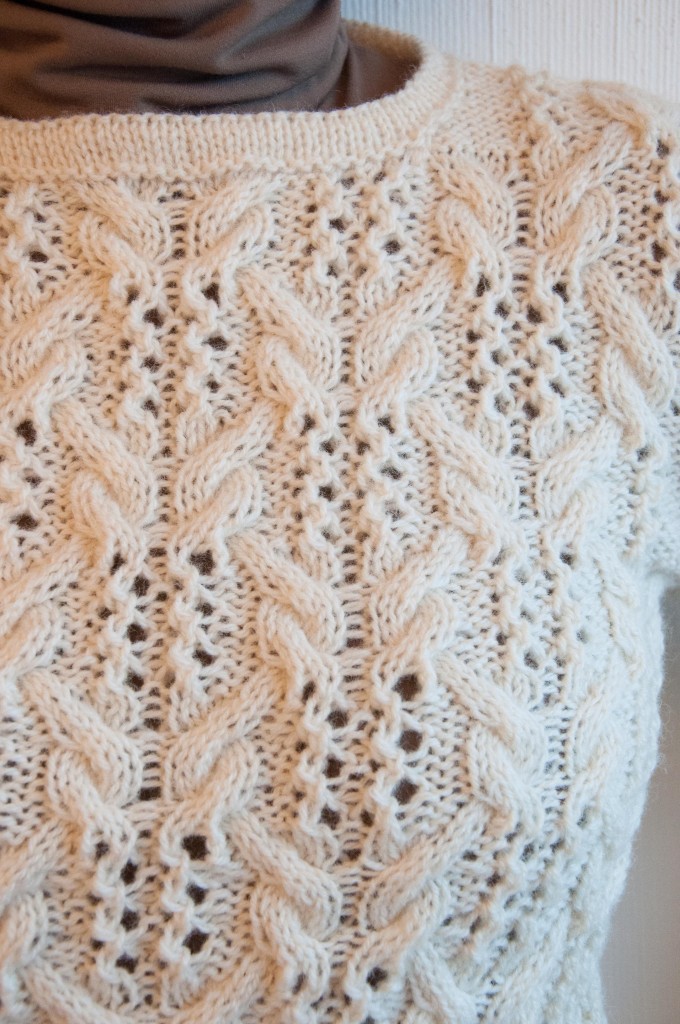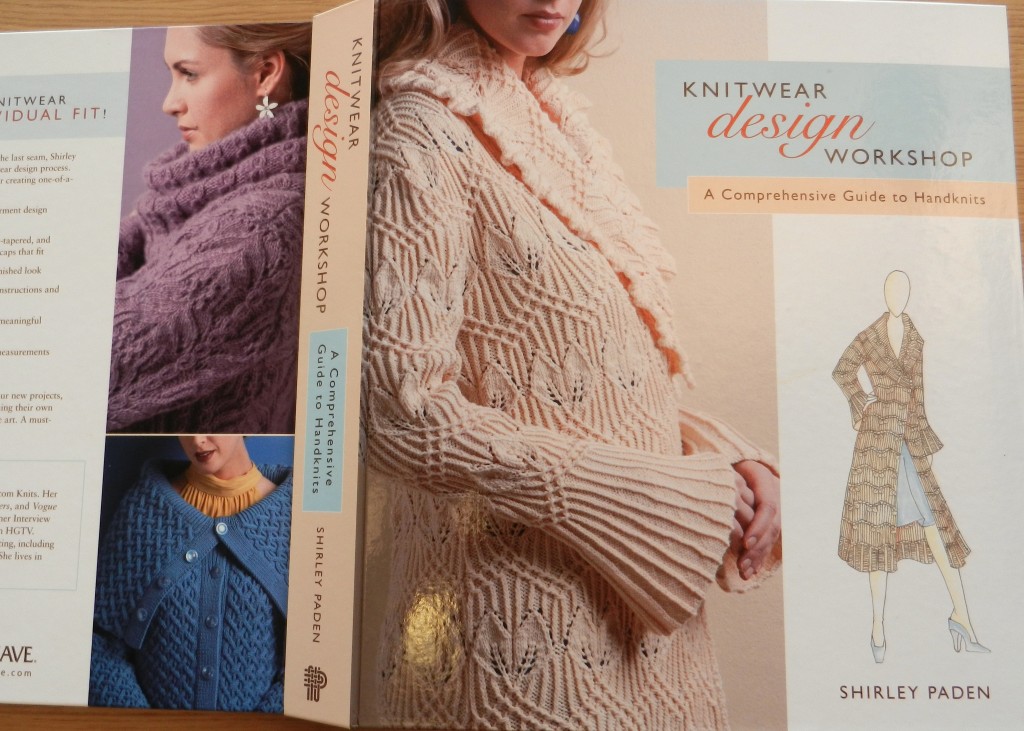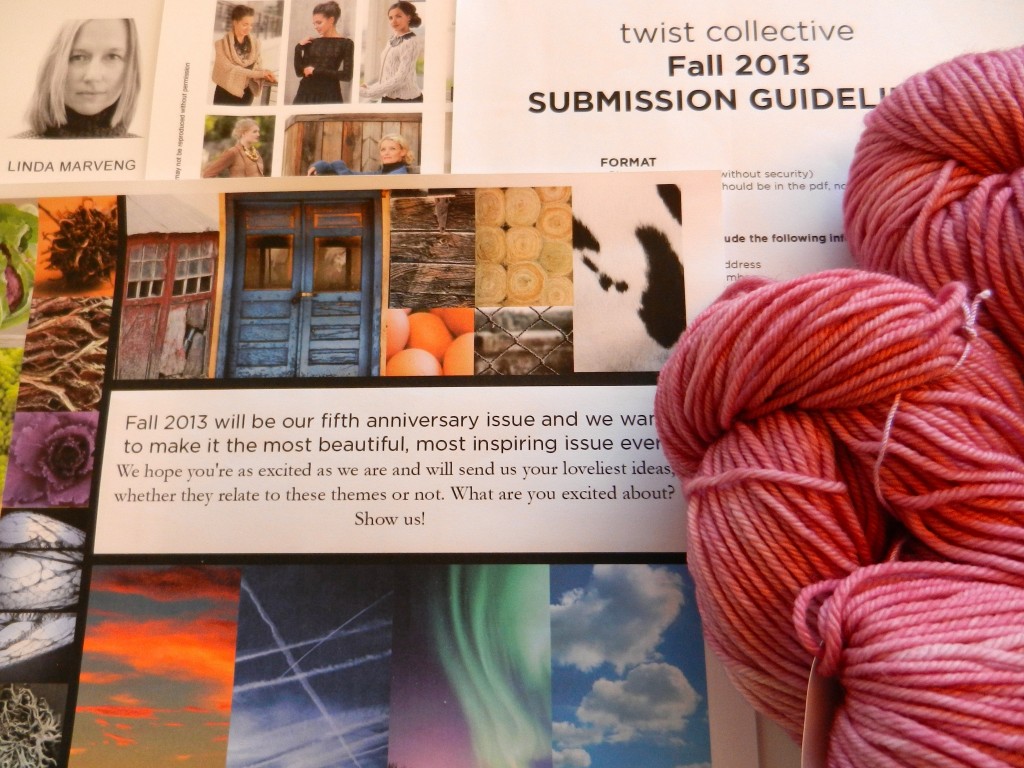I am delighted that my publisher Cappelen Damm has given me permission to release 3 patterns from my book “To rett en vrang. Designstrikk” in English on Ravelry. It was a fairly easy choice based on popularity of the designs, combined the number of pattern request messages sent to me. My chosen photographer Kim Müller has allowed me to use the photographs he took for the book, and I am thrilled to be able to add those to the downloadable patterns in PDF format. The 3 are: Mohair Poncho and Wrist Warmers, Milanese Lace Shawl – thank you, Janie for knitting a stunning one – and Indigo Sweater and Cowl.
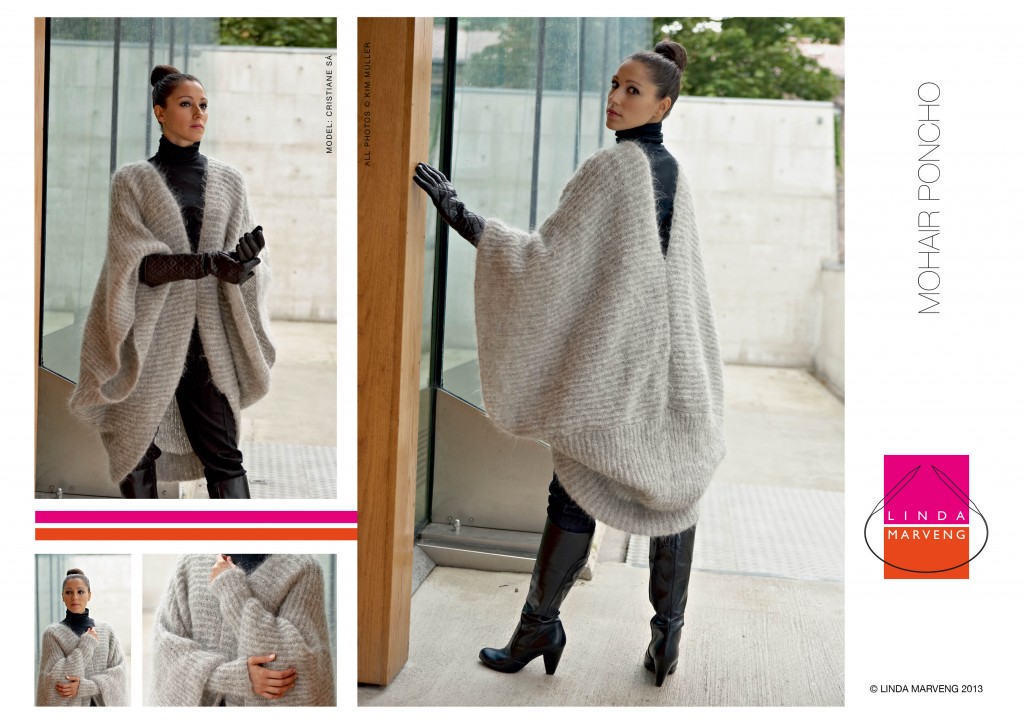 Mohair Poncho. A poncho not reminiscent of the -70s but fashionable in addition to being warm, was my aim. It is easy to knit in 3 identical rectangular pieces but an intermediate challenge to sew together, and comes in one size. The yarn I have chosen is a mixture of alpaca and mohair with a little acrylic from Texere Yarns, now replaced by Destiny Mohair, texere-yarns. It is easy to knit since it is made up of 3 identical rectangles sewn together using a 5 mm/US 8. Why not chose a brushed alpaca instead: Plymouth Yarn Baby Alpaca, plymouthyarn or a mohair and wool mixture from Classic Elite Yarns called La Gran classiceliteyarns. A short front seam, a longer back seam, a bottom seam and a hem. Here stunningly worn by dancer Cristiane Sá.
Mohair Poncho. A poncho not reminiscent of the -70s but fashionable in addition to being warm, was my aim. It is easy to knit in 3 identical rectangular pieces but an intermediate challenge to sew together, and comes in one size. The yarn I have chosen is a mixture of alpaca and mohair with a little acrylic from Texere Yarns, now replaced by Destiny Mohair, texere-yarns. It is easy to knit since it is made up of 3 identical rectangles sewn together using a 5 mm/US 8. Why not chose a brushed alpaca instead: Plymouth Yarn Baby Alpaca, plymouthyarn or a mohair and wool mixture from Classic Elite Yarns called La Gran classiceliteyarns. A short front seam, a longer back seam, a bottom seam and a hem. Here stunningly worn by dancer Cristiane Sá.
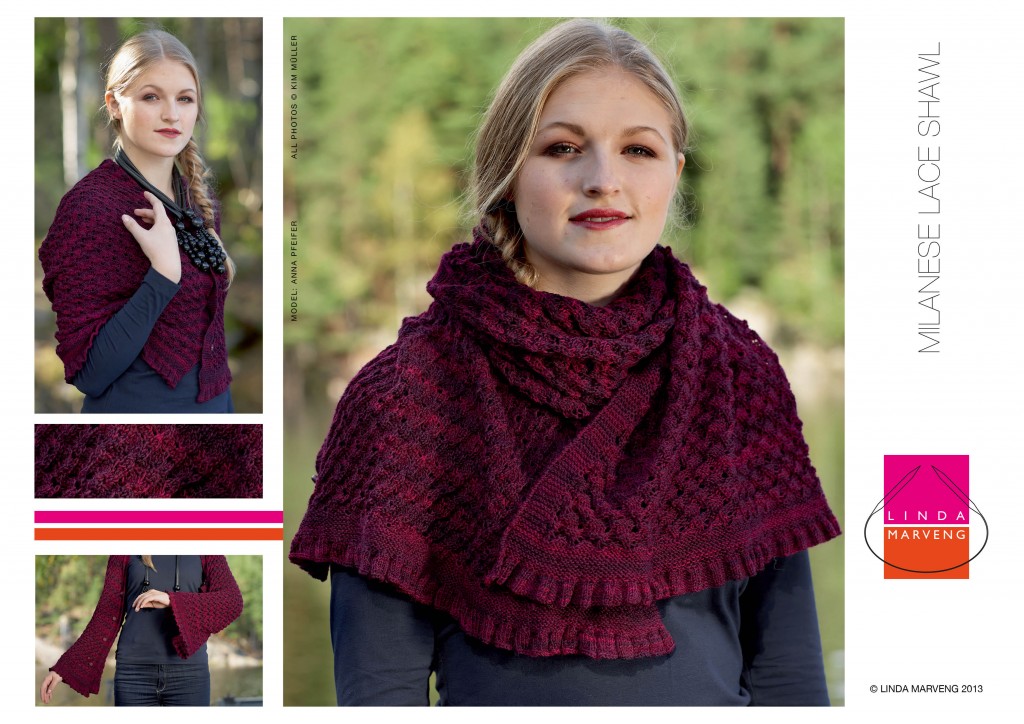 Milanese Lace Shawl. Wollmeise has a large fan base and the phone glows when Loop receives a new delivery. Intense, glowing colors in a yarn with a fantastic stitch definition. All you can do is to become a member of Wollmeiseholics Anonymous on Ravelry. I chose the Wollmeise Lace in a popular color reminiscent of beetroot, in a lace pattern called Milanese Lace. Study all the shade at: shop.strato.de. You can also chose another thin fingering yarn such as Anzula Cloud from anzula or Malabrigo Sock: malabrigoyarn, for the shawl knitted using a 3 mm/US 2.5. With added buttons you can easily wear it as a shrug or a vest like Anna Pfeifer beautifully demonstrates.
Milanese Lace Shawl. Wollmeise has a large fan base and the phone glows when Loop receives a new delivery. Intense, glowing colors in a yarn with a fantastic stitch definition. All you can do is to become a member of Wollmeiseholics Anonymous on Ravelry. I chose the Wollmeise Lace in a popular color reminiscent of beetroot, in a lace pattern called Milanese Lace. Study all the shade at: shop.strato.de. You can also chose another thin fingering yarn such as Anzula Cloud from anzula or Malabrigo Sock: malabrigoyarn, for the shawl knitted using a 3 mm/US 2.5. With added buttons you can easily wear it as a shrug or a vest like Anna Pfeifer beautifully demonstrates.
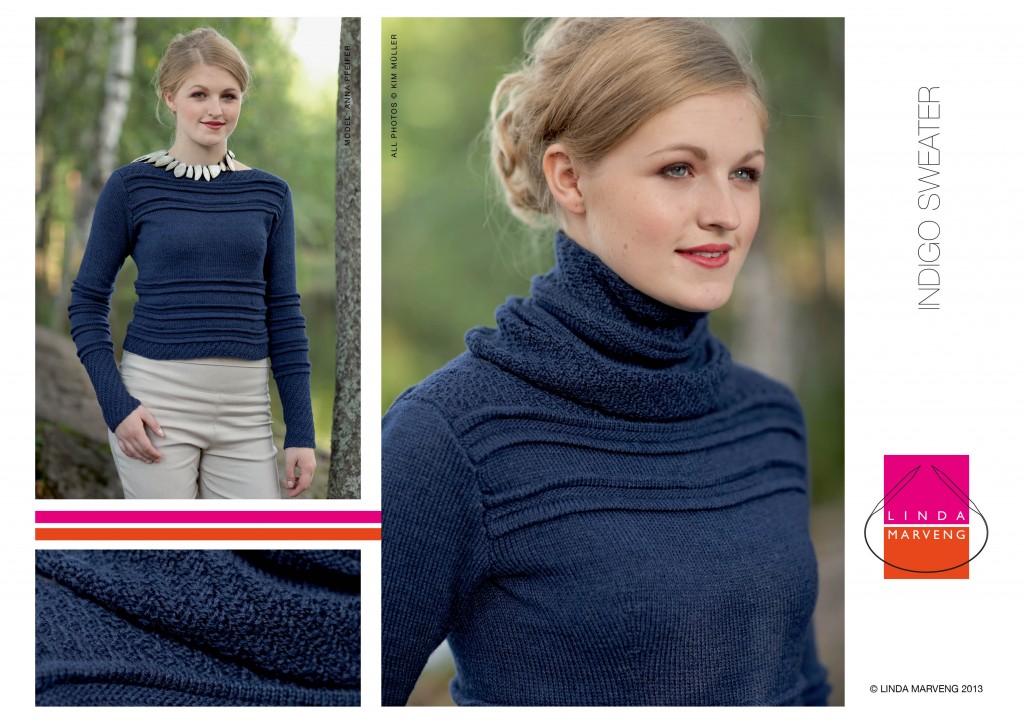 Indigo Sweater and Cowl. The Tucks give a sculptural effect to an otherwise plain sweater knitted in Jaggerspun Zephyr Lace, in a dark indigo color which easily can be combined with the rest of your wardrobe. I have designed yet another party sweater, this time fitted and with a regal cowl. In black in this luscious yarn, it would look like it was made of leather, see jaggeryarn. Knitted with 2 strands held together using a 3 mm/US 2.5 and available in S, M and L. I love the lightness of the yarn, the soft sheen of the silk and the denseness the double yarn creates. It can however be replaced for a single strand option such as Juno Fibre Arts; Alice Sock, available at loopknittingshop and at etsy or Heritage Silk from cascadeyarns.
Indigo Sweater and Cowl. The Tucks give a sculptural effect to an otherwise plain sweater knitted in Jaggerspun Zephyr Lace, in a dark indigo color which easily can be combined with the rest of your wardrobe. I have designed yet another party sweater, this time fitted and with a regal cowl. In black in this luscious yarn, it would look like it was made of leather, see jaggeryarn. Knitted with 2 strands held together using a 3 mm/US 2.5 and available in S, M and L. I love the lightness of the yarn, the soft sheen of the silk and the denseness the double yarn creates. It can however be replaced for a single strand option such as Juno Fibre Arts; Alice Sock, available at loopknittingshop and at etsy or Heritage Silk from cascadeyarns.
All 3 patterns will shortly be available to buy and download on Ravelry, here is my designer page: ravelry. I am also proud of the “Merino Omslagsvest” Nina Hove Myhre has knitted from my book using Tosh Sock in a stunning green shade. See her photos and her button making on the previous blog post, here: fiberandart.

